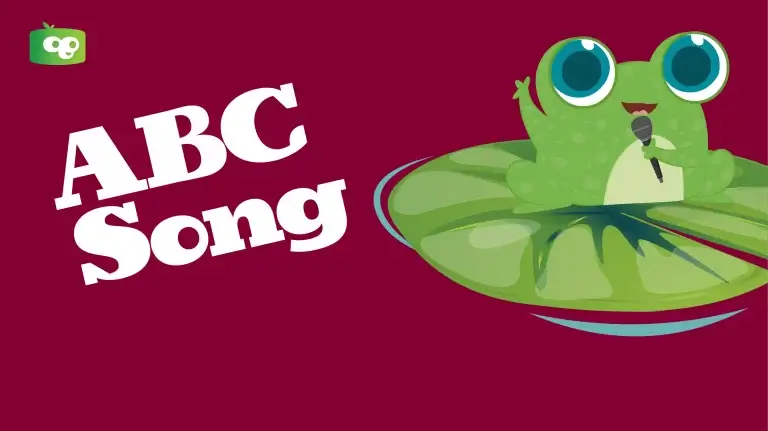

It is believed that American Charles Bradlee wrote The ABC Song in 1835. Its tune is the same as Twinkle Twinkle Little Star, and similar to Baa Baa Black Sheep. It’s a favorite and one of the most popular nursery rhyme songs in our Kokotree educational app for kids to learn the alphabet. And it helps children to start learning and forming words!
The ABC Song has obvious educational benefits for children, with the catchy rhythm helping to consolidate these skills.
Incorporating playful activities can enhance the learning experience of the ABC Song. Here are more ways you can engage with your child:
These activities can be rotated, keeping the learning process fresh and fun. Remember, repetition is key, and the more enjoyable you make the process, the faster your child will grasp the preschool songs and its sequence.
There are so many nursery rhyme songs that have been a cornerstone of early childhood education for generations. These melodious tunes are not just catchy and fun; they also play a pivotal role in cognitive, language, and emotional development. Let’s dive deeper into understanding their significance.
Nursery rhyme songs, like the classic “Humpty Dumpty” or “Hickory Dickory Dock,” are filled with rich vocabulary. They introduce children to new words and phrases, enhancing their language comprehension and speaking abilities.
Songs like “Old MacDonald Had a Farm” with its repetitive verses help kids remember and recall information. This aids in improving their short-term and long-term memory skills.
Nursery rhyme songs often depict emotions, stories, and scenarios. “Jack and Jill” or “Three Blind Mice” can evoke emotions of empathy, joy, or even suspense, helping children understand and express their feelings better.
The rhythmic patterns in nursery rhyme songs stimulate motor coordination. Kids tend to move, clap, or tap their feet in tune with songs like “Row, Row, Row Your Boat” or “The Wheels on the Bus.”
Some nursery rhyme songs carry historical significance or cultural anecdotes. “London Bridge is Falling Down,” for instance, has roots in historic events, introducing kids to cultural nuances in a fun manner.
Group sing-alongs or nursery rhyme activities promote interaction, sharing, and understanding social cues. It’s a wonderful way to foster friendships and improve peer interaction.
Nursery rhyme songs like “Baa Baa Black Sheep” or “The Ants Go Marching” carry underlying moral lessons about sharing, hard work, or being kind. They subtly instill good values in children.
With characters like flying cows, talking teapots, and moons with spoons, nursery rhyme songs stir the imagination, paving the way for creative thinking and visualization.
In conclusion, nursery rhyme songs are more than just entertainment. They’re potent educational tools, shaping a child’s intellect, emotions, and personality. Integrating them into daily routines or educational curricula can significantly benefit a child’s holistic development.
The ABC Song, also known as “The Alphabet Song,” has a rich history that dates back to the 19th century. As you might already know, the tune is borrowed from the classic “Twinkle Twinkle Little Star,” which in turn has its origins in a French melody. This same melody was adapted into several other nursery rhymes, solidifying its place in children’s education and entertainment.
It’s interesting to note that the melody associated with the ABC Song has been attributed to none other than the legendary composer, Wolfgang Amadeus Mozart. He composed a set of variations on the French tune in the late 18th century. This melody’s timeless appeal is a testament to its simplicity and universality.
Singing, in general, plays a pivotal role in early childhood education. It’s not just about the ABC Song; songs are tools that can introduce children to new concepts, enhance their language skills, and stimulate cognitive development.
Songs like the ABC Song introduce children to phonetics. When a child sings, they articulate words and sounds, enhancing their pronunciation and vocabulary.
Believe it or not, the ABC Song is more than just an educational tool. Singing is a therapeutic activity that can help regulate a child’s emotions, instill a sense of joy, and build self-confidence.
Over the years, the ABC Song has seen many versions and adaptations. With the rise of technology, there are now interactive versions of the song available on apps, like Kokotree, and various online platforms.
The ABC Song has transcended beyond its original version. Today, we see versions in multiple languages, jazzed-up rhythms for older kids, and even remixes incorporating modern beats. These adaptations keep the song relevant for every generation.
While the primary focus of the ABC Song is to teach kids the alphabet, its benefits extend beyond just letters.
The ABC Song is often a child’s first introduction to the world of music. The melody, rhythm, and repetition provide a foundation upon which children can develop a love for music.
When kids sing the ABC Song in a group, they learn to synchronize with others, await their turn, and listen to their peers. This group activity fosters teamwork and develops essential social skills.
It’s easy to incorporate the ABC Song into your child’s daily routine:
The ABC Song remains a cornerstone in early childhood education for a reason. It’s simple, effective, and versatile. As parents and educators, understanding its multiple benefits can help us utilize this tool more effectively, ensuring our toddlers and preschoolers get the best start in their learning journey.




